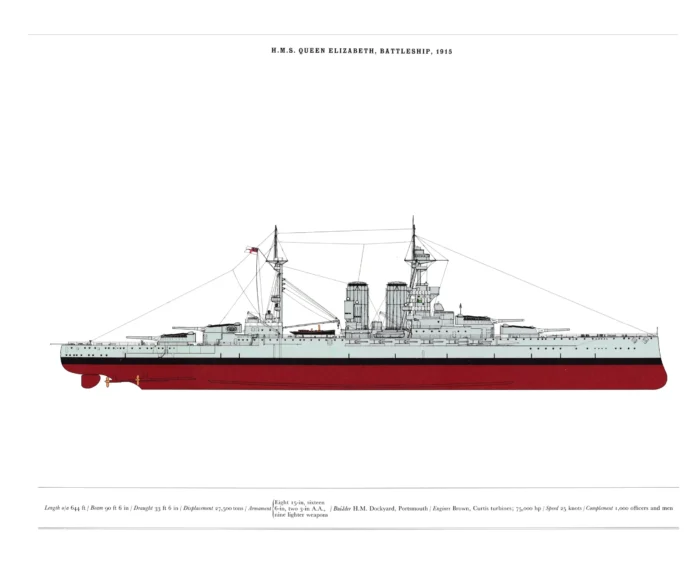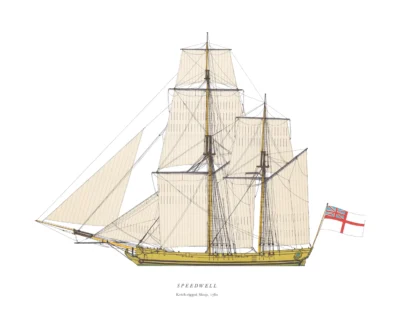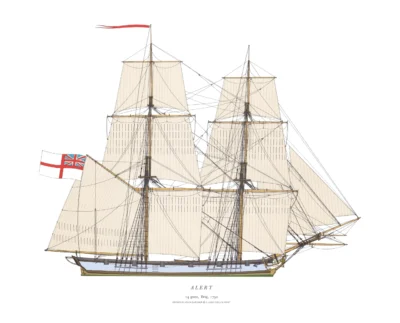HMS Queen Elizabeth, Battleship, 1915
£17.50
Queen Elizabeth: lead ship of her class of five dreadnought battleships (scroll down for a more detailed Description)
Published 1971 by © Hugh Evelyn Limited; drawn by Martin Holbrook
Size: c. 42.5 x 35.5 cm [17″ x 14″] (may vary slightly from printers’ cut 50 years ago)
Printed on high white matt cardstock 154 g/sm2
Print is LARGE size – shipping is the same for 1 to 10 prints (based on largest print size in your order) – see Shipping & Returns.
In stock
Description
Queen Elizabeth:
Dreadnought Battleship: first of the type to be powered by oil
Built: HM Dockyard Portsmouth, Hampshire, UK;
Laid: 1912; Launched: 1913; Commissioned: 1914; Decommissioned: 1948;
33,110 Tons; Length: 639′ 9″ (195 m); Beam: 9o’ 7″ (2.6 m); Draught: 33′ (10.1 m);
Power: 75,000 shp (56,000 kW); 4 shafts; 24 knots (44 km/h; 28 mph);
Range: 5,000 nmi (9,260 km; 5,750 mi) at 12 knots (22 km/h; 14 mph);
Armament: 4 twin x 15″ (38 mm); 16 x 6″ (152 mm); 2 x 3″ (76 mm) AA; 4 x 21″ (533 mm) torpedo tubes;
Named for Elizabeth I, this was the lead ship of her class of battleships built for the Royal Navy in the early 1910s. They were an advance almost as big as Dreadnought 10 years earlier. After Iron Duke, the Admiralty pursued a larger, more heavily armed and faster class of ships. First Admiralty Lord, Winston Churchill, pushed development of the 15-inch gun, capable of firing a one-ton projectile more than 20 miles – outdistancing the American, Japanese and German battleships. The design provided for five twin turrets of 15-inch (380 mm) guns, but one turret was sacrificed in the interests of speed. She and the other super-dreadnought battleships were the first of their type to be powered by oil instead of coal. With a range of 8,600 nautical miles carrying 3,300 tons of oil at 12.5 knots she had a healthy range and with a top speed of 24 knots was quick. She was often used as flagship and served in WW I as part of the Grand Fleet where she participated in the inconclusive Action of 19 August 1916. She carried out routine patrols and training in the North Sea. She later served in several theatres during the Second World War, including the Mediterranean where she was mined by Italian frogmen in Alexandria in 1941. In 1945 she joined the Eastern Fleet where she was involved in raids on Japanese bases in the Dutch East Indies. From Reserve in 1945 she was scrapped in 1948.
Additional information
| Weight | 0.0232 kg |
|---|---|
| Dimensions | 44 × 35.5 cm |





